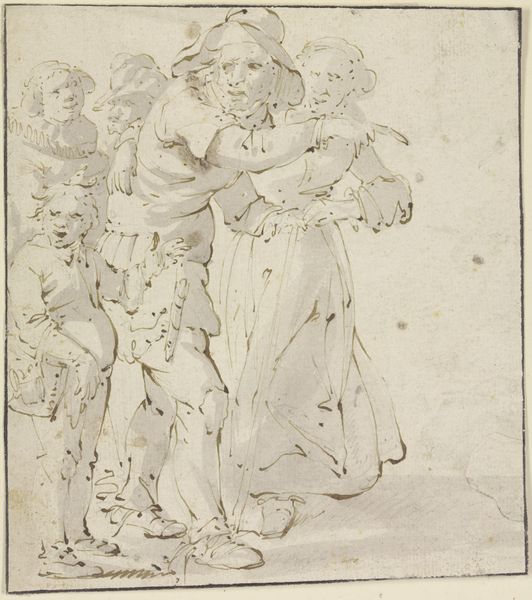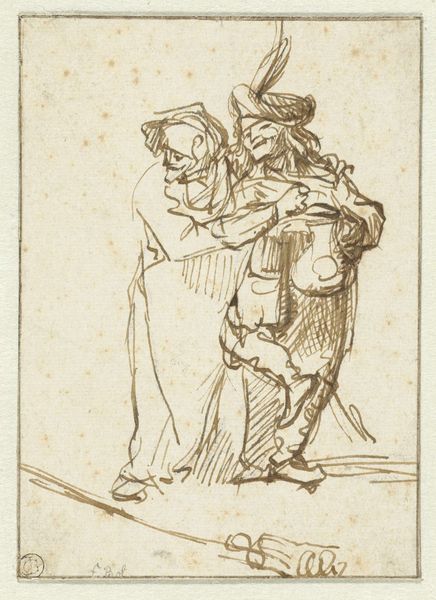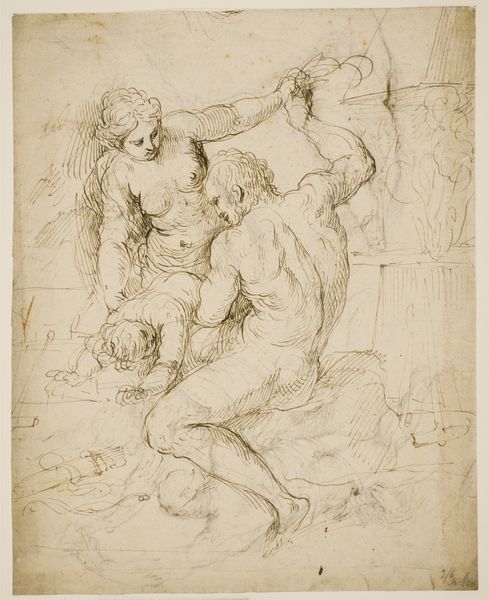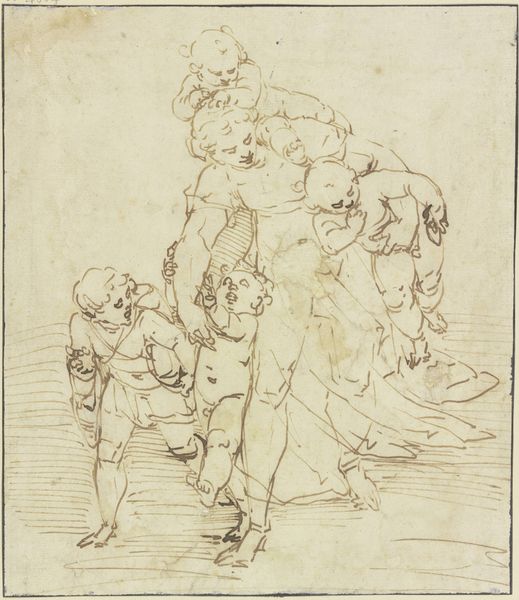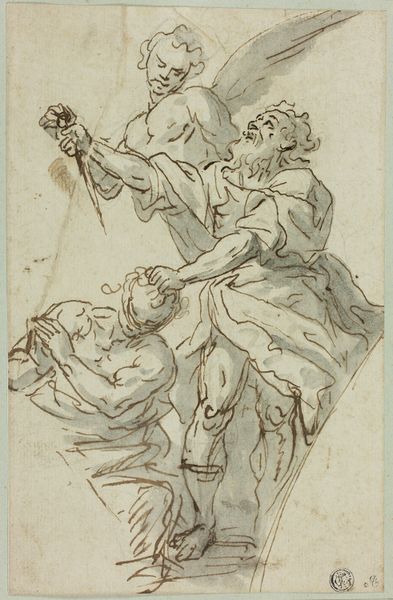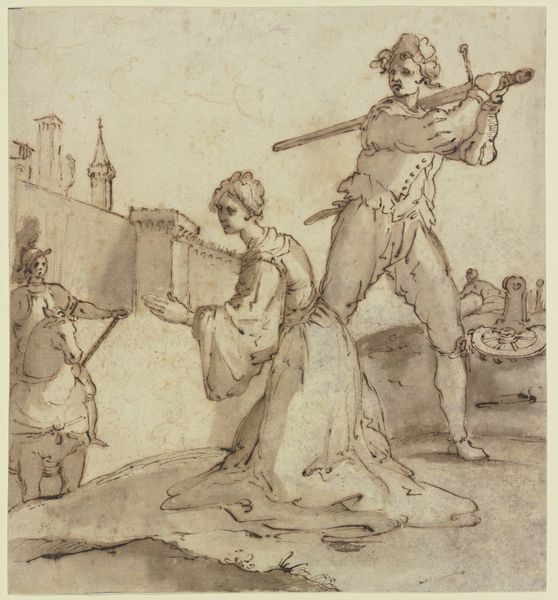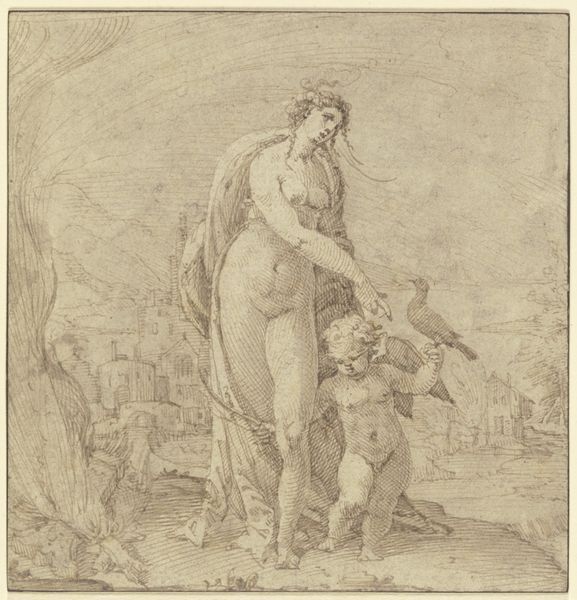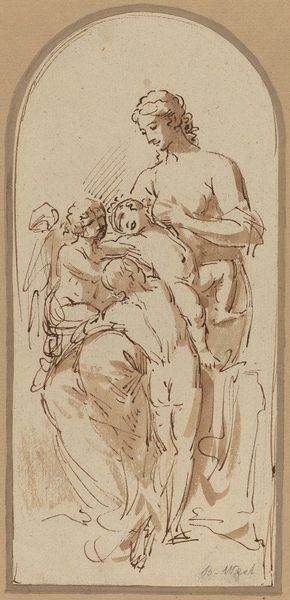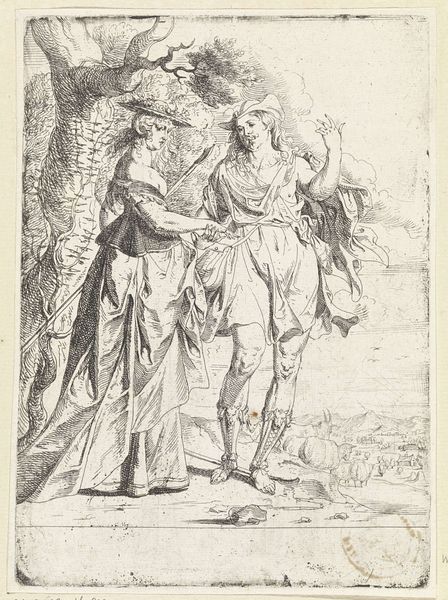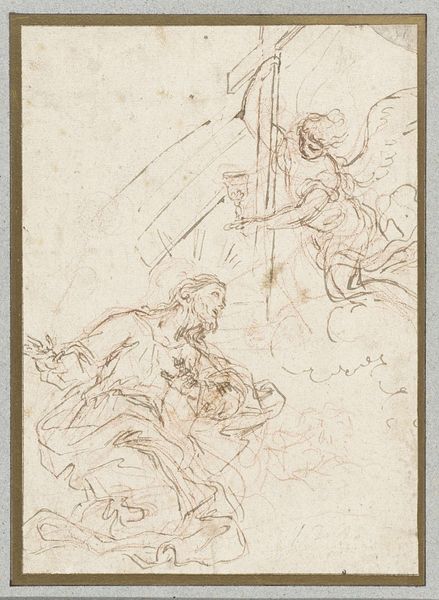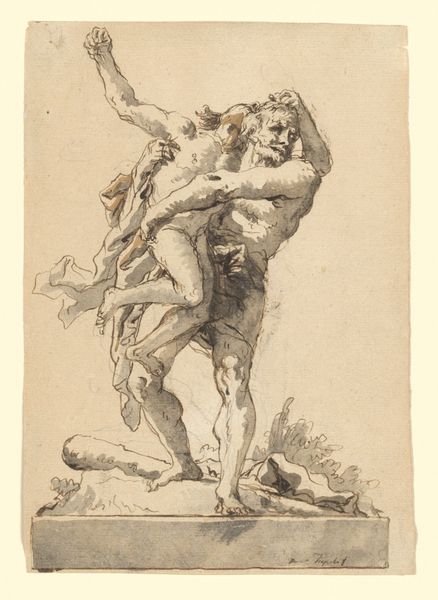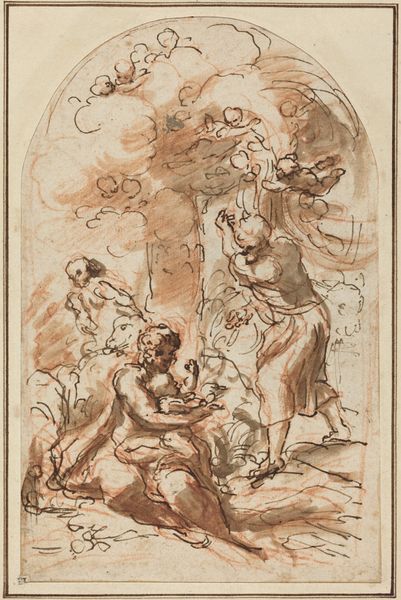
drawing, paper, ink
#
drawing
#
netherlandish
#
baroque
#
figuration
#
paper
#
ink
#
14_17th-century
#
genre-painting
Copyright: Public Domain
Editor: Here we have Adriaen van de Venne's "Ein Bauer liebkost ein Milchmädchen, dabei ein Hund", or "A Farmer Courts a Milkmaid, with a Dog," created in 1619. It's an ink drawing on paper. There’s something immediate about its sketch-like quality that I find intriguing. What strikes you most about this drawing? Curator: Well, I immediately focus on the labor represented here. Look at the milkmaid's attire, the presence of the milk pail, and the very raw lines of the drawing itself. This isn't some idealized pastoral scene; it feels much closer to the everyday toil that underpinned 17th-century Netherlandish society. Even the dog feels utilitarian. Editor: So, you’re seeing the artwork as commentary on social classes? Curator: Partly, but more on the depiction of work itself. How does van de Venne’s choice of ink on paper contribute to our understanding? It’s a readily available, relatively inexpensive medium. Contrast this to an oil painting commissioned by a wealthy patron; this drawing likely circulated among a very different audience. Do you see the difference? Editor: Absolutely. An etching or print would allow for broader distribution. The act of reproducing art democratizes the content and the art historical conversation, which challenges typical power structures of the period. Curator: Exactly. Consider, also, how the quick, sketchy lines convey a sense of immediacy, mirroring the labor it represents. Is there an intentional connection being made, do you think? Editor: I think there must be. The materials, the process, and the subject are intertwined to speak to a different segment of society. The rough quality suggests a work created without pretension, grounded in lived experience, more in reach of the “working class”. I've learned to consider these works as indicators of labor practices. Thanks for helping me understand how materiality adds meaning to a work.
Comments
No comments
Be the first to comment and join the conversation on the ultimate creative platform.
